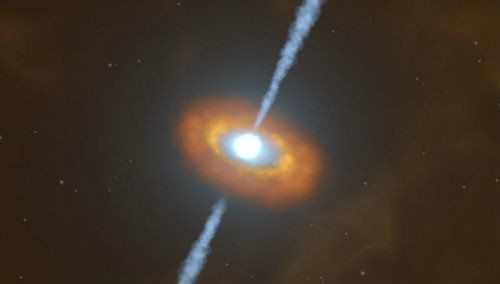Black Hole As Bright As 100 Suns Spotted Near Earth [WATCH]

A team of researchers detected a black hole near Earth as it flickers radiantly while devouring a nearby star. According to the researchers, the light emitted by the black hole’s flickering is brighter than a hundred Suns.
The researchers, led by astronomers from the University of Southampton, were able to observe the black hole using the data collected by the HiPERCAM of the Gran Telescopio Canarias and NASA’s NICER observatory aboard the International Space Station.
According to the researchers, the black hole is known as MAXI J1820+070. It was first discovered in 2018 and lies only about 10,000 light-years from Earth.
Unlike the supermassive black hole at the center of Milky Way galaxy, MAXI J1820+070 is very small with only seven times the mass of the Sun. However, despite its size, the black hole is able to display powerful light emissions as it feeds on the cosmic material from a nearby star.
The researchers explained that as the black hole strips off and absorbs cosmic material from its companion star, an accretion disk forms around it. The gravitational, frictional and magnetic forces within the disk heat up the black hole, causing it to flicker and emit high levels of visible light electromagnetic radiation.
Lead researcher John Paice said he and his team were able to record footage of the flickering black hole using NICER and HiPERCAM. He noted that the emissions produced by MAXI J1820+070 were as bright as a hundred Suns.
“The movie was made using real data, but slowed down to 1/10th of actual speed to allow the most rapid flares to be discerned by the human eye,” he said in a statement.
“We can see how the material around the black hole is so bright, it’s outshining the star that it is consuming, and the fastest flickers last only a few milliseconds – that’s the output of a hundred Suns and more being emitted in the blink of an eye,” Paice added.
The findings of the researchers regarding MAXI J1820+070 were presented in a new study published in the journal Monthly Notices of the Royal Astronomical Society.
© Copyright IBTimes 2024. All rights reserved.





















